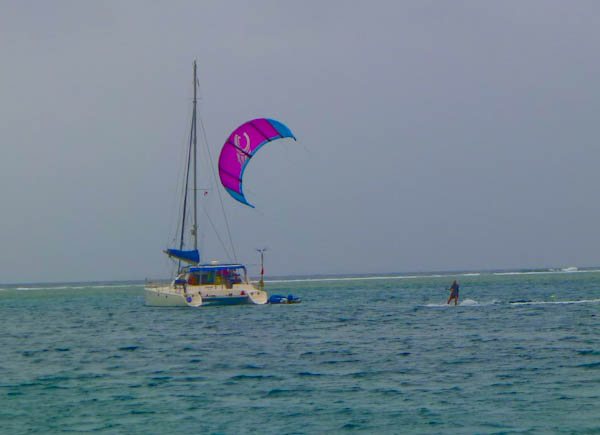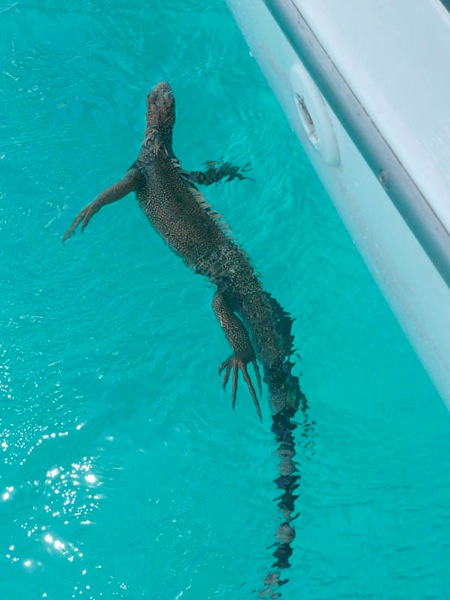We haven’t seen another cruising boat for weeks, now that we’ve moved east and south in the San Blas, towards (but not approaching, since our Panama papers don’t expire for a while) the Colombian border. We’re visiting some places we missed when we came north and west from Colombia last year, like Ustupu, Ailigandi, Achutupu and Playon Chico.
It’s been a pleasant surprise. The people we’re able to deal with are friendly and happy to talk, or they politely just leave us be. The children are full of ‘holas‘ , waves and smiles. Even naked little babies wave. The confident among them ask our names. Ana, I say, y Douglas -“Doo-glas” is how it comes out here. When the kids give back a name, they don’t leave any part out; we’re amusing to them as we tangle our tongues. Hey – we’re here to entertain!
The streets are almost always dirt and often more path than boulevard and we’ve seen them raked daily by a squadron of women and children. The smell is of cooking fires, fueled by husks of coconuts. Almost every house on the waterfront has an outhouse over the sea. The schools are concrete with breeze-block ‘windows,’ all painted yellow above blue. We notice the differences between islands: solar panels, TV antennas, satellite dishes have come to a few islands, public water taps, tiendas and panaderias, libraries, churches and their denominations, but we don’t know enough to come to conclusions.
The Kunas are taking advantage of the lull before the rainy season to clear the forest for agriculture. It’s perfect weather for slash and burn, and plumes of smoke rise all along this part of the coast. We were much less aware of this phenomenon in the area closer to Porvenir favored by most of the yachts.
Speaking of agriculture, the Colombian freight boats, like the Caracol, run through here regularly. Here’s a ‘crop’ of coconuts bound for Cartagena. Each one of the 15,000 nuts (they’re actually seeds, I believe) aboard brought thirty cents to its seller, said the man whose legs you see. Coconuts are prime source of income throughout the San Blas. As the Bauhaus Cruising Guide to Panama is quick to inform, every coconut has an owner, and it is not the cruiser who finds it on the beach!
 My sea-going nephew K learned at an early age that the best small-boat cargo is a waterproof one. Coconuts are waterproof, but they need shade lest they crack open, and they’re heavy. These are destined for ‘food’ in Colombia, and fetch I think about 800 pesos apiece there, not quite doubling in value en route.
My sea-going nephew K learned at an early age that the best small-boat cargo is a waterproof one. Coconuts are waterproof, but they need shade lest they crack open, and they’re heavy. These are destined for ‘food’ in Colombia, and fetch I think about 800 pesos apiece there, not quite doubling in value en route.





 KITESURFER
KITESURFER




